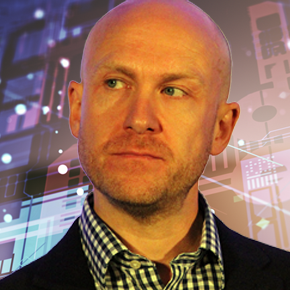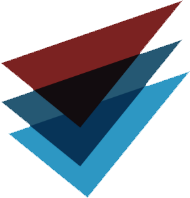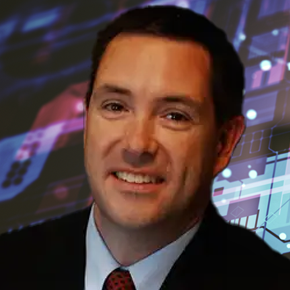September 20, 2023
Barriers to Change in Engineering

Transcript
What Stops Engineering Innovation?
If you talk to any of the top management in large engineering organizations, they will undoubtedly say that they want to push their decision-makers and engineering to adopt more streamlined work processes, to do more with less. They want their frontline engineers to increase the productivity of common work processes, to monitor cost alongside manufacturability and to adopt the best new technology to improve upon the status quo. And then they’re frustrated when they find that it’s hard to get buy-in from engineering.
What common barriers to organizational change are these teams missing? And how can they go about overcoming the barriers to change so that the culture change can happen to adopt new technology in the short term and to adapt work processes to reduce workload and increase productivity in the long term. For this conversation, I’m delighted to have Mark Rushton, an engineer with an in-depth understanding of the barriers to change within engineering organizations, especially when it comes to the adoption of new technology that can help engineers work smarter, more efficiently and with less change projects, if only they adopt it. Mark is going to shed light on different types of barriers to change, emotional, tactical even political that inhibit change and stifle innovation. And also what effective communication strategies can help frontline engineers overcome barriers to change. That’s a lot. Let’s get into it, Mark Rushton, welcome to the podcast.
Mark Rushton: Thanks for having me, Leah. It’s great to be back.
What are Common Barriers to Change in Engineering?
Leah Archibald: So, let’s start by understanding barriers to change. What are the common barriers to change in engineering organizations?
Mark Rushton: That’s a great question. I think one of the biggest ones, which I first-hand experienced out in many different situations is just the politics of it. No one really wants to take on extra work that they fear is outside their responsibility, but also likewise, they don’t want to give away that responsibility. People find comfort in being busy. If you are really, really busy at your job, you kind of think, Wow, I’m kind of valuable.
Leah Archibald: Now, I can’t imagine that someone is literally sitting at their desk thinking, I don’t want to be productive. I think it might be more subconscious that there’s a fear of change.
Mark Rushton: It’s human nature to have a fear of change and not really understanding what the benefits are. I think it’s very difficult to us to imagine a piece of technology can empower us and make us more efficient, more effective at our job, because we’ve probably spent a good deal of time studying or building up experience to do that job. And I think there’s always fear and uncertainty or just some reluctance to learn a new tool, especially if you’re very proficient at the one that you’re currently using. But also I’ve heard it many times where they’re busy being busy, they don’t have time to really understand and look at new tools that are out there. And there’s still a lot of design engineers that are using 2D CAD. And that’s ancient now, I thought the discussion around the benefits of 3D Design were long gone, but there’s still a lot out there. So I think there’s still people resistant to change and happy using the tools that they’re currently using.
Fear of New Technology is a Barrier to Change
Leah Archibald: So there’s a lot there, people don’t want to change their jobs, maybe there’s some fear of job loss, so things are going to get more streamlined through new technology. There’s also the human fear of change. But you mentioned a real barrier to change, which is switching course. Like there’s some education that needs to go into switching from 2D CAD, just switching from 3D CAD even if you’re aware that you have a short life left. There’s a barrier to doing that education in the short term.
Mark Rushton: I’ve spent much of my career talking to design engineers, people in product development. And design engineers in particular, just want to design products. They just want to create nice shapes, make sure it’s really, really good whatever the design is supposed to do. And anything additional to that is kind of not really what they signed up to do as a design engineer. And there’s more pressure on designers now to work to a certain cost but also we’ve got sustainability as an extra pressure. But it’s kind of extra that is on the plate of a design engineer to deal with. And I think those are the stakeholders within the business that maybe own the environmental impact, there’s probably cost engineers who own the cost of a design, and they both want to hold on to their piece of the pie and design engineers are perhaps reluctant to take on extra responsibility.
Example of Change Management in Action
Leah Archibald: So let’s put a little legs on this example, maybe you can talk through an example from your experience where it was hard to bring in that change management, and you had to do some different sorts of effective communication to get all the stakeholders adopting new technology.
Mark Rushton: So a really good example, it was an aerospace manufacturer, actually manufacture ejector seats for different types of aircraft. And they were looking at introducing model-based definition and actually applying product manufacturing information directly on to the 3D model, which meant you could reduce the amount of time to CNC machine those parts, because they’ve already got the dimensions and tolerances on and the CAM software could read them directly off the 3D model. Essentially a design engineer would do the same job by applying those dimensions and tolerances, but on a 2D drawing that was coming from the 3D model. So they would drag a 3D model on to a 2D drawing sheet and apply all these same dimensions and tolerances. So for someone one step removed, you’re kind of doing the same amount of work. So that seemed like a real big win for the company, and also, the machinist can save a lot of time in programming the CNC machine because they’ve got more than half of the information that they need that. But when we kind of dug a little deeper, the design engineer was quite happy doing the 2D drawing, they were very proficient at it, very fast.
And the machinist was also worried about the point I made earlier, If we’re just gonna load this 3D CAD model in and it’s all done for me, but does that mean I’m going to be doing more jobs, they don’t tend think to about that, people… The human brains actually wired to think of the negative things first, we latch on to the negative and go, That means I’m gonna have less work to do, and if there’s multiple CNC machinists in my organization, then who’s gonna get the chat. We don’t tend to think of it as, This is good for the company. We can all be much more productive and we can improve the quality ’cause we can spend more time on the right things. So I think it needs leadership to bring everybody together to set the vision and say, This is not necessarily a cost-cutting exercise or not in terms of resources, because we want to do more, we don’t want to lose people and just carry on doing the same amount. We want to do more or better quality, we want to improve things.
Leah Archibald: What do you say to design engineers or other frontline workers who say, I’m too busy to adopt this, this is not going to make my life easier, I just don’t have time for change.
aPriori Reduces Barriers to Change by Putting Decision-Making in Designer’s Hands
Mark Rushton: I think the power of aPriori is around decision-making and design has always been about decision-making. There’s so many ways you can approach something, and it’s down to the designer to make the right choice at the end of the day. And the more data that you’ve got to draw upon the better those decisions are going to be. So if I was an industrial designer, I would want to leverage focus groups and get the opinions of lots of different people to see what design is the most aesthetically pleasing, but if I was industrial equipment designer or an automotive designer or something that maybe is less aesthetic and more functional or very high volume, I might want to consider the cost of something. ‘Cause if something’s too expensive to buy, that’s definitely gonna impact on the success of the product. And also environmental impact, that’s something that people are actually switching jobs to work for someone with a more positive environmental impacts.
And so more data points to make the design decisions, just make the decision-making process faster. There’s actually actually Steven Palette podcast, he was saying that his experience as a CEO, where he was most successful was the businesses that realized that making a decision quickly is far more inexpensive, it’s far cheaper to make a decision quickly and kind of learn from it, whether it’s good or bad, and then move on to the next thing.
So if a designer can get data around the carbon footprint very quickly, get information around the cost or even the manufacturability, that speed at which you can turn around different decision-making exercises has a huge value in.
Leah Archibald: What I’m hearing from you is that the communication you need to do in change management is not, We’re gonna automate you out of a job, frontline design engineers. It’s, we’re giving you the tools to make more effective decisions quicker so that you can actually be more effective at your job.
Mark Rushton: I think everyone is driven by wanting to improve. I think it just empowers the change process.
Leah Archibald: Well, you’ve motivated me to get past the barriers to change. Mark Rushton, thank you so much.
Mark Rushton: Thanks Leah. Thanks for having me.








